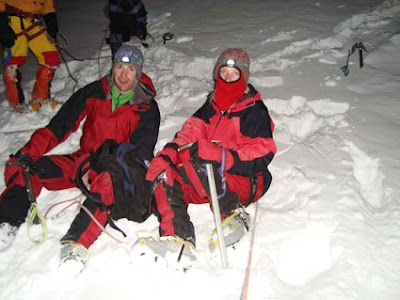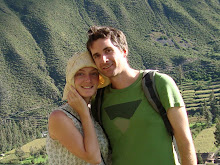 Lake Atitlán
Lake Atitlán has been described as one of the most beautiful lakes in the world. We arrived in town hoping to fit in some walking, taking in great views of the crater lake and surrounding volcanoes. We found a nice clean hotel for only £6 a night in the biggest town on the lake, Panajachel.

The top of the town was a good place to be – it was busy with locals with a nice local produce market and an excellent bread shop, from where we bought a simply delicious banana loaf. Heading further down towards the lake, the town turned into a tourist strip with restaurants, travel agencies and lots of local craftwork.

This busy road led down to the lakeside with beautiful views across to the volcano and jetties where local boat tours set off from.

It was all very nice and would make a good destination on a two week holiday. It’s also possible from here to take a boat across the lake to smaller hippy and traveller hangout villages around the lake.
We couldn’t quite face this for the hassle of getting there and the thought of lots of foreigners bumming around soaking up the vibes. Our enquiries into walking in the hills around the lake were met with negative mutterings about robberies and the suggested alternatives were expensive private boat tours. We couldn’t help but think back to the wonderful week we had spent around
Lake Titicaca, hiking and marvelling in peace and tranquillity. A quick morning discussion when neither of us could be bothered to get out of bed very early made us both realise that we really weren’t enjoying the Guatemalan tourist experience and that it was time to cut it short and hotfoot it to Nicaragua via El Salvador, which was the quickest route.

Following this we felt much more positive about things, avoided all possibilities of organised excursions and instead walking two hours along a hillside road adjacent to the lake to two nearby villages.

Most of the steep hillsides were forested but around the villages some of the slopes had been terraced and villagers were busy tending to all sorts of healthy looking crops. The first village we came to was unremarkable but the second was a lovely find.

The majority of the inhabitants were dressed in matching traditional woven fabric, the men in knee-length skirts and the girls and women in long, dark blue wraparound skirts with colourful belts and blouses. The sensitive tourists/neglectful bloggers that we are, we didn’t take photos. We caught a lift back to Panajachel in the back of a pick-up truck – the equivalent of the local bus service here – sat on sideways benches opposite bemused locals. The next morning we left for
El Salvador’s capital,
San Salvador, pleased to be leaving
Guatemala with at least a snapshot of the country beyond the overdeveloped tourism trail. We would like to come back here with less luggage and take local buses to some more remote places. We found the people to be friendly, the countryside is beautiful and our accounts of it from our week here really don’t do it justice.
 A typical shop front with handpainted adverts and signs.
A typical shop front with handpainted adverts and signs.

 The top of the town was a good place to be – it was busy with locals with a nice local produce market and an excellent bread shop, from where we bought a simply delicious banana loaf. Heading further down towards the lake, the town turned into a tourist strip with restaurants, travel agencies and lots of local craftwork.
The top of the town was a good place to be – it was busy with locals with a nice local produce market and an excellent bread shop, from where we bought a simply delicious banana loaf. Heading further down towards the lake, the town turned into a tourist strip with restaurants, travel agencies and lots of local craftwork.  This busy road led down to the lakeside with beautiful views across to the volcano and jetties where local boat tours set off from.
This busy road led down to the lakeside with beautiful views across to the volcano and jetties where local boat tours set off from.  It was all very nice and would make a good destination on a two week holiday. It’s also possible from here to take a boat across the lake to smaller hippy and traveller hangout villages around the lake. We couldn’t quite face this for the hassle of getting there and the thought of lots of foreigners bumming around soaking up the vibes. Our enquiries into walking in the hills around the lake were met with negative mutterings about robberies and the suggested alternatives were expensive private boat tours. We couldn’t help but think back to the wonderful week we had spent around
It was all very nice and would make a good destination on a two week holiday. It’s also possible from here to take a boat across the lake to smaller hippy and traveller hangout villages around the lake. We couldn’t quite face this for the hassle of getting there and the thought of lots of foreigners bumming around soaking up the vibes. Our enquiries into walking in the hills around the lake were met with negative mutterings about robberies and the suggested alternatives were expensive private boat tours. We couldn’t help but think back to the wonderful week we had spent around  Following this we felt much more positive about things, avoided all possibilities of organised excursions and instead walking two hours along a hillside road adjacent to the lake to two nearby villages.
Following this we felt much more positive about things, avoided all possibilities of organised excursions and instead walking two hours along a hillside road adjacent to the lake to two nearby villages.  Most of the steep hillsides were forested but around the villages some of the slopes had been terraced and villagers were busy tending to all sorts of healthy looking crops. The first village we came to was unremarkable but the second was a lovely find.
Most of the steep hillsides were forested but around the villages some of the slopes had been terraced and villagers were busy tending to all sorts of healthy looking crops. The first village we came to was unremarkable but the second was a lovely find.  The majority of the inhabitants were dressed in matching traditional woven fabric, the men in knee-length skirts and the girls and women in long, dark blue wraparound skirts with colourful belts and blouses. The sensitive tourists/neglectful bloggers that we are, we didn’t take photos. We caught a lift back to Panajachel in the back of a pick-up truck – the equivalent of the local bus service here – sat on sideways benches opposite bemused locals. The next morning we left for
The majority of the inhabitants were dressed in matching traditional woven fabric, the men in knee-length skirts and the girls and women in long, dark blue wraparound skirts with colourful belts and blouses. The sensitive tourists/neglectful bloggers that we are, we didn’t take photos. We caught a lift back to Panajachel in the back of a pick-up truck – the equivalent of the local bus service here – sat on sideways benches opposite bemused locals. The next morning we left for  A typical shop front with handpainted adverts and signs.
A typical shop front with handpainted adverts and signs.











































